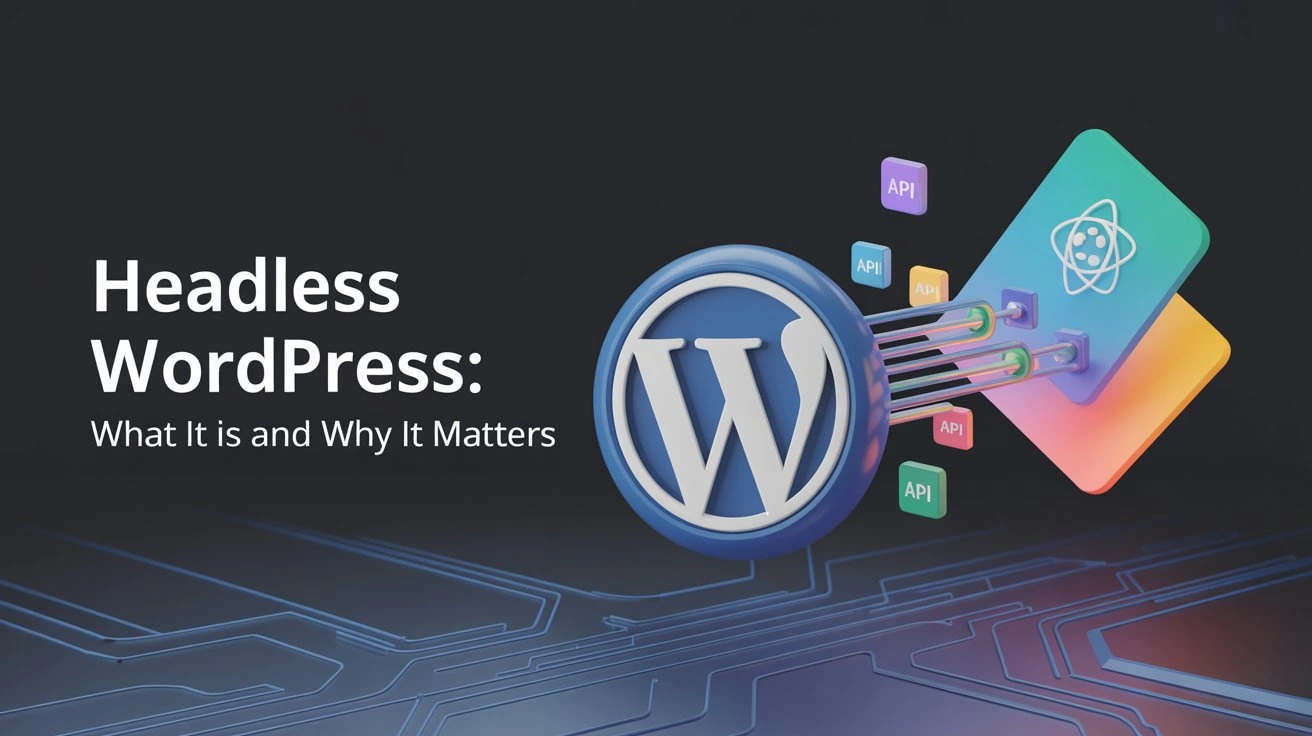Hi there! I’m Aman Aggarwal, an experienced WordPress developer who’s been in the game for years, building websites that are fast, secure, and scalable. Recently, I’ve dived into an exciting and innovative approach known as Headless WordPress. This method is fantastic for boosting your website’s performance while giving you complete control over its design.
In this blog, I’m going to break down what Headless WordPress is, explain why it’s going to be crucial in 2025, and discuss how businesses are leveraging it to tackle real-world challenges. I’ll also share some success stories and practical examples along the way.
Whether you’re a startup founder, a marketer, or a developer curious about the latest in web architecture, this guide will show you why going headless could be the right move.
What Is Headless WordPress?
Let’s simplify it.
In a traditional WordPress configuration, WordPress takes care of both the frontend (what users see) and the backend (where content is created and managed). Everything operates together, PHP templates handle your posts, pages, and themes.
With Headless WordPress, there’s a separation:
- The backend (WordPress dashboard, database, plugins, etc.) remains intact.
- The frontend is developed separately, often using modern frameworks like React, Next.js, Vue, or Gatsby.
- Communication between the frontend and backend is done through REST API or GraphQL.
In this setup, WordPress serves purely as a Content Management System (CMS), which is why we refer to it as a “Headless CMS.”
Why Does Headless WordPress Matter in 2025?
We’re in an age where people expect incredibly fast websites, personalized experiences, and smooth delivery across various platforms (like web, mobile apps, and smart devices). That’s where Headless WordPress excels.
🔥 Here’s why it’s important:
- Speed & Performance: Frontends built with React or Next.js load way quicker than traditional WordPress themes.
- Security: With no direct public access to wp-admin or PHP files, there are fewer opportunities for attacks.
- Flexibility: You can create unique designs and interfaces that go beyond the limits of standard themes and page builders.
- Scalability: It’s easy to integrate WordPress with mobile apps, e-commerce platforms, or even Internet of Things (IoT) devices.
- Omnichannel Delivery: Publish content once and use it across multiple platforms like mobile apps, kiosks, and more.
💡 As a WordPress developer, adopting a headless approach has enabled me to tackle complex user experience and speed challenges for clients across various sectors.
Benefits of Headless WordPress
Let’s dive into some real perks of adopting a headless strategy.
1. Improved Website Speed
React or Vue frontends deliver content either statically or server-side, meaning no sluggish WordPress theme bloat.
2. Better Security
The backend is separate and not openly accessible, which makes it more difficult for bots and hackers to gain access to your admin panel.
3. Complete Design Freedom
Designers and developers can craft pixel-perfect user interfaces using JavaScript frameworks, free from the constraints of WordPress themes.
4. Multi-Platform Content Delivery
You can push the same content to mobile apps, websites, and smart TVs through a single WordPress dashboard.
5. Easier Migrations & Rebuilds
Since the frontend and backend evolve separately, redesigning the site won’t interfere with the CMS, and vice versa.
How Headless WordPress Works (in Simple Terms)
Here’s the flow:
- You use WordPress as usual to create posts and pages.
- Your frontend (like a Next.js app) pulls in that content using REST API or GraphQL.
- The frontend then displays the pages to users.
- Users never directly interact with WordPress; they just see the clean, efficient frontend.
Think of it like having a WordPress brain but a custom-built body.
Real-Life Examples of Headless WordPress Success
As someone who specializes in Headless WordPress development, I’ve been involved in several projects where this approach has made a significant difference.
Example 1: Healthcare Platform
The client needed a super-fast blog experience across both web and mobile. I created a Next.js frontend that pulls content from WordPress through the REST API.
Results:
- 85% faster page load time
- 30% drop in bounce rate
- Content auto-populates seamlessly across the website and mobile app
Example 2: Tech Startup (SaaS)
They wanted a slick React-based product frontend but also needed an easy-to-use blog CMS.
Solution: Combine a WordPress backend with a React frontend.
Results:
- Complete creative control over the UI
- Content creators thrived with the familiar WordPress editor
- Smooth integration of SEO metadata
Headless WordPress vs Traditional WordPress
| Feature | Traditional WP | Headless WP |
| Speed | Slower | Faster |
| Security | More exposed | More secure |
| Design | Theme-based | Framework-based |
| Scalability | Limited | Highly scalable |
| App Integration | Hard | Easy |
Headless is perfect for: SaaS applications, e-commerce sites, web portals, content-heavy websites, and modern businesses aiming to scale.
Tools & Frameworks to Use with Headless WordPress
- Frontend Frameworks: Next.js, Gatsby, Nuxt.js, Astro
- APIs: WordPress REST API, WPGraphQL
- Headless Hosting: Vercel, Netlify, AWS Amplify
- CMS Extensions: ACF (Advanced Custom Fields), WPGraphQL plugin
Conclusion
Headless WordPress represents the future of scalable, lightning-fast, and flexible website development. It gives you unparalleled control over user experience while keeping the robust features of the WordPress CMS.
Whether you’re launching a blog, a SaaS product, or a high-performing business site, Headless WordPress can be a game-changer.
🚀 Let’s Work Together
If you’re considering building a Headless WordPress site or thinking about a migration from a traditional setup, I’m here to help.
👉 I’m Aman Aggarwal, a trusted WordPress Developer based in India, with hands-on experience in creating modern, scalable, and SEO-friendly Headless WordPress websites.📩 Let’s connect at amanaggarwal.in — and let’s bring your Headless project to life!



